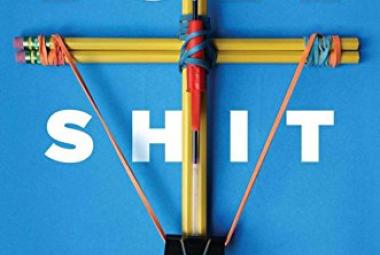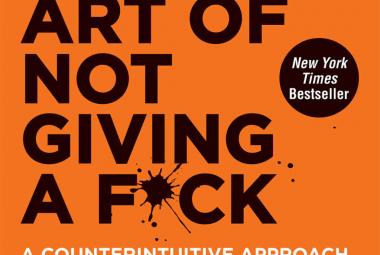In One Small Step Can Change Your Life – the Kaizen Way, Robert Maurer describes the power of Kaizen in a personal environment. Implementing small and easy improvements, the basics of the Toyota Production System, can also be applied to achieving personal goals.
Maurer describes why you need to take small steps if you want to change people’s behavior and then describes six techniques to apply Kaizen in your personal life: Asking small questions (1), thinking small thoughts (2), taking small actions (3), solving small problems (4), bestowing small rewards (5) and identifying small moments (6).
In the introduction, Maurer describes WHY TAKING SMALL STEPS are the best way to change routines. The answer lies in the way our brains are built. Brains consist of ate least three parts: the brainstem, the midbrain (amygdala) and the cerebral. The brainstem is the automatic pilot of our body, which takes care of functions like breathing and sleeping. The midbrain (amygdala) is our survival instinct, our fight of flight response. The third part, the cerebral, includes our creative abilities. Each part of the brain has different response times. The brainstem will response the fastest, followed by the midbrain, and only after that, the cerebral will respond to outside stimulus.
This means our creativity can only be accessed when the stimulus does not bring out fear in our midbrain. By implementing small changes at a time, the flight response, which blocks creativity, can be circumvented.
The remaining chapters describe six strategies of kaizen, starting with ASKING SMALL QUESTIONS. Our brains like small questions to canalize creativity. For example, when you show a picture of a dog to a toddler and tell him ´this is a dog´, the toddler will hardly respond. However, if you show the picture and ask the toddler: ´what is this? This is a dog! ´, the toddler will be show big eyes because he seems surprised by the answer.
Asking questions helps to overcome fear, and therefore the flight response. One should not be anxious about finding the answers though, a creative answer pops up automatically after a day or two, or even after just a good night sleep.
The second kaizen strategy to circumvent the flight response is THINKING SMALL THOUGHTS, or visualization. By simply thinking about your response in a certain situation beforehand, you can prevent the flight mode in an unexpected difficult situation.
People who try to give up smoking or eating candy often give up their fight when they are in a difficult situation because they do not have the time to take the right decision because the situation is ´new´. Being tired also makes it easier to fall back into old behavior. By thinking about difficult situations in advance, you can trick your brain into thinking the situation is not new, and therefore prevent yourself from falling back to your old routine behavior.
Strategy number three is TAKING SMALL ACTIONS, again, to circumvent a flight response. Maurer writes that starting a new routine can be done with starting only one minute per day, which familiarizes your brain with the new activity. Examples of Maurer´s patients who have changed their routine using this strategy are: Starting to exercise with one minute of moving in front of the TV (1) or just standing on the treadmill for one minute (2). One patient that wanted to get more sleep started to go to bed earlier, one minute every day. After a few days, the action becomes so comprehensible, that people feel the urge to lengthen the activity, and perform them more minutes per day.
SOLVING SMALL PROBLEMS is the next kaizen strategy. Don´t wait with solving a problem until it has become a real problem, but learn how to recognize small things that can lead to problems in the future. Small irritations today could lead to huge irritations in the future. It might be easier to act on that today, than it is in the future.
BESTOWING SMALL REWARDS can motivate to continue new learned behavior. The best rewards are free, like spending time on a hobby, should fit with your goal (eating a bag of chips after achieving your goal of eating a healthy Meal is not a good idea) and should fit the person who receives it (not everybody likes the same way of receiving compliments).
In your private life, a spouse can help with rewarding new behavior, for instance by taking on an extra chore in the household leaving you with 10 minutes for yourself, or to do something fun with the kids.
The last strategy Mauer describes is RECOGNIZING SMALL MOMENTS, cause the small moments are the moments that bring happiness to one´s life. Mauer describes two recommendations: Live in the present (1) and focus on small gestures (2). It is one´s task in life to find happiness and significance in every moment. Children are the perfect example. They play, learn and grow in the moment, without worrying about the future or regretting the past.
It is the small positive gestures that form the foundation of every relation between two people. Research in the VS shows that one could predict whether or not a couple would still be together four years later, by looking at small gestures with 93% accuracy! These gestures include putting down the newspaper or remote control when your spouse comes home (1), always answering your phone in a friendly way – even though you are busy (2) and showing interest in your spouse´s day (3).
The six strategies of Kaizen all focus on continuously making small efforts to change behavior by circumventing our natural flight response. These strategies work at work and at home and for anyone. If it were up to me, we´d all start asking small questions to ourselves and to others, today.
Continue to:















